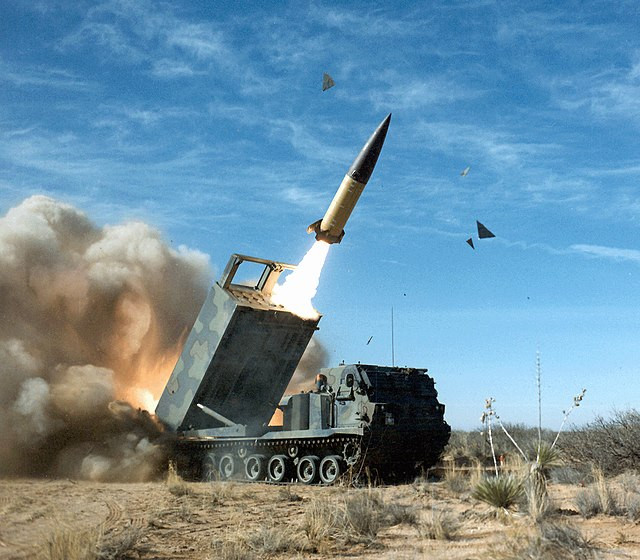The United States has confirmed that Ukraine fired U.S.-supplied long-range Army Tactical Missile System (ATACMS) missiles into Russian territory, marking a pivotal moment in the conflict. The unprecedented strike targeted a weapons depot near Karachev in Russia's Bryansk region, approximately 70 miles from the Ukrainian border. This marks the first known use of ATACMS by Ukraine on Russian soil, a move that signals an escalation in its military capabilities and strategic reach. A U.S. official, speaking on condition of anonymity, confirmed that seven missiles were launched, with Russia reportedly intercepting two.
The strike follows a recent decision by the Biden administration to lift restrictions on Ukraine's use of advanced long-range weapons. For months, Kyiv had lobbied Washington for permission to deploy ATACMS, a development that underscores Ukraine's determination to disrupt Russian supply lines and logistics hubs. Ukrainian President Volodymyr Zelenskyy hinted at the strike without explicitly confirming it, stating, "We now have ATACMS... and we will use all this."
Moscow's response was swift, with Kremlin spokesman Dmitry Peskov warning that the White House's decision could trigger a "new spiral of tensions." Russia's Defense Ministry claimed that five of the six reported missiles were intercepted mid-flight, with the sixth causing a small fire upon landing. While no injuries were reported, the strike has been perceived as a symbolic and operational escalation.
The deployment of ATACMS has deepened concerns across Western capitals regarding potential Russian retaliation. European ministers and U.S. officials fear that Moscow may respond not solely on the battlefield but through hybrid warfare measures targeting critical infrastructure, cyber systems, and covert sabotage. In recent months, Russia has been accused of conducting a series of hybrid attacks, including sabotage of undersea fiber-optic cables in the Baltic Sea-a development that has raised alarm among NATO members.
State Department spokesperson Matthew Miller highlighted the mounting apprehension, stating, "We are incredibly concerned about hybrid warfare conducted by Russia... and it's something we have been in close coordination with our European allies." The recent sabotage of critical infrastructure was discussed during a meeting of European ministers in Brussels, with French, German, Italian, and British leaders accusing Russia of "systematically attacking European security architecture."
Western intelligence agencies remain vigilant, warning of potential Russian escalation through state-sponsored acts of sabotage, cyberattacks, or even assassinations targeting high-profile figures. A former senior European defense official expressed the region's vulnerability, noting, "Europe lacks the necessary resources to counter Russian sabotage attacks, which they believe will intensify following Biden's decision to provide Ukraine with long-range missiles."
Russian Foreign Minister Sergei Lavrov has promised an "appropriate" response to the introduction of ATACMS in the conflict. Analysts predict that Moscow may intensify airstrikes on Ukrainian infrastructure or escalate tensions through asymmetric means, potentially increasing support for proxy forces in regions like the Middle East.
The revised Russian nuclear doctrine, signed by President Vladimir Putin, further complicates the situation. The doctrine expands conditions under which Moscow may consider a nuclear response, including conventional attacks by a non-nuclear state backed by a nuclear-armed ally-a clear signal to NATO and the U.S.
Amidst these tensions, Kyiv's use of ATACMS has been framed as a necessary step to weaken Russian capabilities. Ukrainian military sources confirmed targeting the 1046th logistics center near Karachev, emphasizing their commitment to halting "armed aggression" from Russia. Videos circulating on social media appeared to show explosions in the Bryansk region, though independent verification remains limited.
The U.S. and Europe are now weighing their responses as Russia's next moves remain unpredictable. Western officials continue to bolster defenses against potential hybrid attacks, as the conflict's frontlines increasingly extend beyond Ukraine's borders. NATO Secretary General Mark Rutte recently warned that the war's "frontline is moving beyond borders... to western Europe, and even to the high north."






